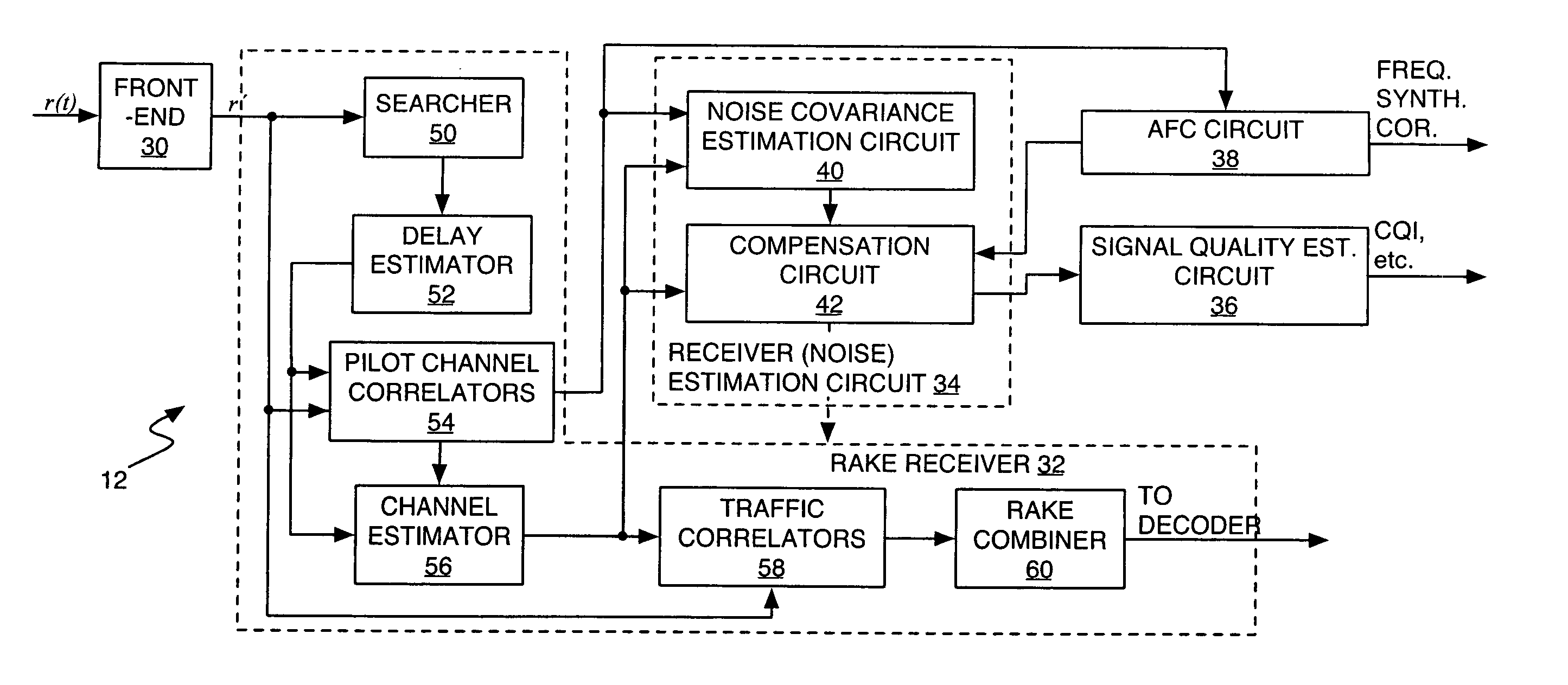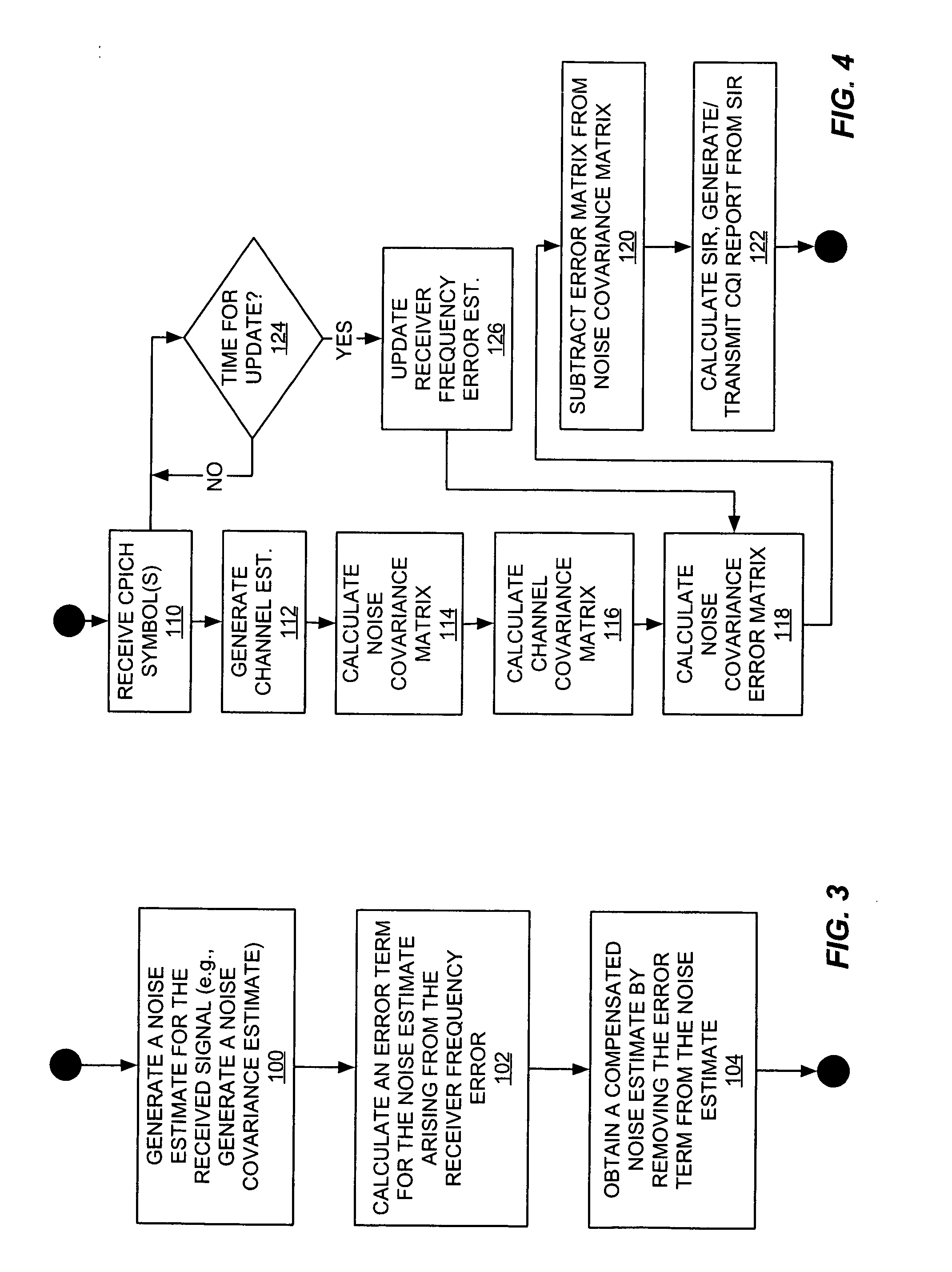Method and apparatus to compensate for receiver frequency error in noise estimation processing
- Summary
- Abstract
- Description
- Claims
- Application Information
AI Technical Summary
Benefits of technology
Problems solved by technology
Method used
Image
Examples
Embodiment Construction
[0020]FIG. 1 illustrates a wireless communication device 10 that is configured in accordance with one or more embodiments of the present invention. Device 10 may comprise essentially any type of wireless communication device or system, and thus may comprise a mobile station, a Portable Digital Assistant (PDA), a pager, a laptop / palmtop computer, etc. In at least one embodiment, the wireless communication device 10 comprises a mobile station configured for operation in a cellular communication network. In at least one embodiment, the wireless communication device 10 comprises a mobile station configured for operation in a Wideband CDMA (W-CDMA) communication network.
[0021] Thus, with the understanding that device 10 is not limited by the disclosed illustrations, FIG. 1 depicts an arrangement wherein device 10 is adapted for wireless communication and comprises a receiver 12 to receive and process received signals, a transmitter 14 to generate and transmit signals, one or more antenn...
PUM
 Login to View More
Login to View More Abstract
Description
Claims
Application Information
 Login to View More
Login to View More - R&D
- Intellectual Property
- Life Sciences
- Materials
- Tech Scout
- Unparalleled Data Quality
- Higher Quality Content
- 60% Fewer Hallucinations
Browse by: Latest US Patents, China's latest patents, Technical Efficacy Thesaurus, Application Domain, Technology Topic, Popular Technical Reports.
© 2025 PatSnap. All rights reserved.Legal|Privacy policy|Modern Slavery Act Transparency Statement|Sitemap|About US| Contact US: help@patsnap.com



